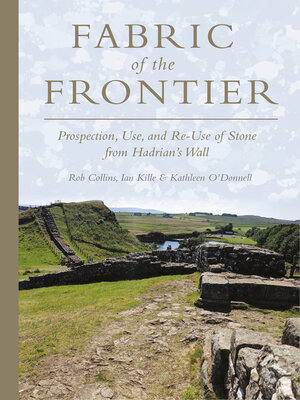Fabric of the Frontier
ebook ∣ Prospection, Use, and Re-Use of Stone from Hadrian's Wall
By Rob Collins

Sign up to save your library
With an OverDrive account, you can save your favorite libraries for at-a-glance information about availability. Find out more about OverDrive accounts.
Find this title in Libby, the library reading app by OverDrive.



Search for a digital library with this title
Title found at these libraries:
| Library Name | Distance |
|---|---|
| Loading... |
What is Hadrian’s Wall made of, where did this material come from and how has it been reused in other buildings in the communities that emerged in the centuries after the Roman Empire? By studying the fabric of Hadrian’s Wall using a geological approach combined with archaeological methods, is it possible to refine our answers to these questions? This study describes how the relationship between the geology of the Wall’s landscape and its fabric may be used to further understand the Wall and presents a significant set of new geological and archaeological data on the Wall’s stones from across the length of the Wall. This data set has been collected in two complementary ways. First as a citizen-science project, where volunteers from local communities were trained to visually characterize sandstones and resulting in data collecting on large numbers of the Wall’s stones along the length of the Wall. Secondly, analytical research was used to gather in scientific data for a selected sets of rocks and stones. Geochemical data was captured using an X-ray fluorescence spectrometer, and petrographic observations made using a petrographic microscope and thin sections. The combined methods provide a framework for geological analysis of the Wall supported by robust data. It builds on earlier work on Roman quarrying and stone preparation highlighting not only stone sources, but the criteria for choosing stone, stone preparation methods, and the implied routes to the Wall. At the heart of this study lies the ability to uniquely identify different sandstone types. Geological methods used to achieve this are explored, as are the ways in which the sandstones form. This highlights both the possibilities and limits of this approach.







